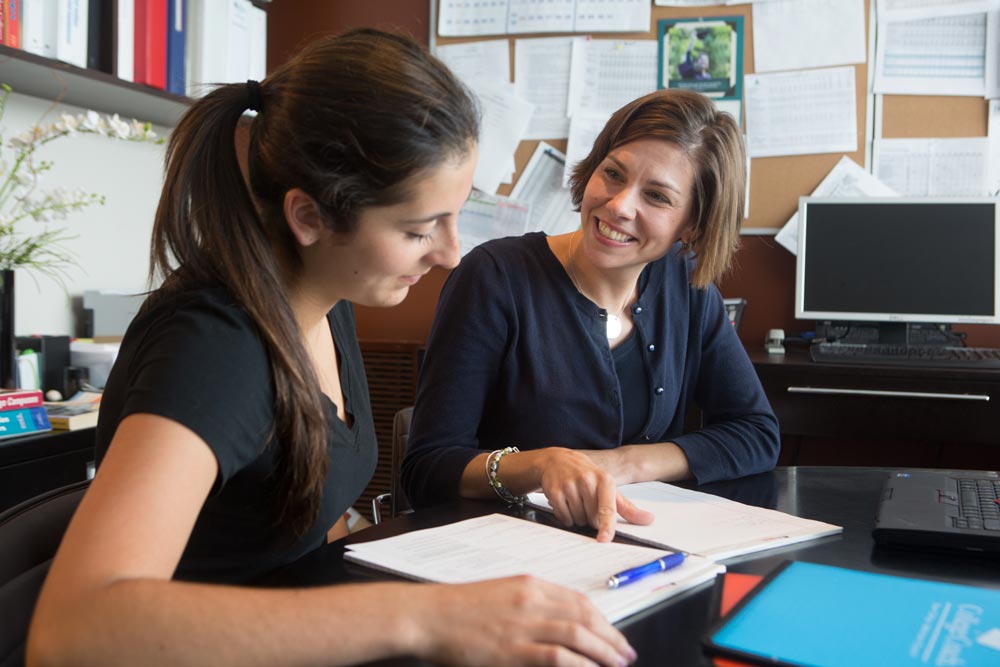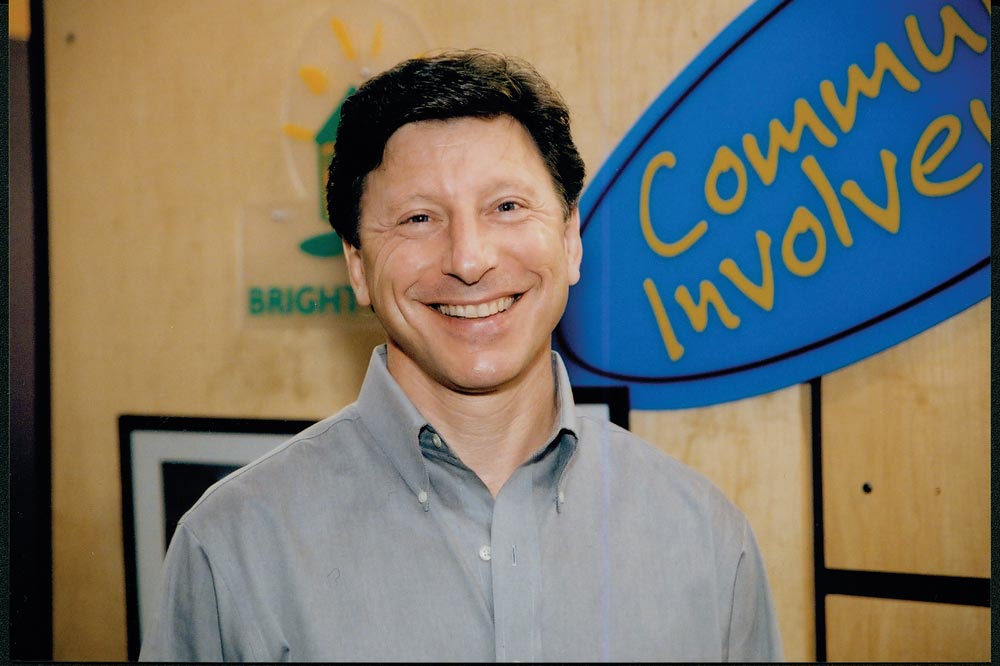Post by Karin Weaver, National Director, Bright Horizons Foundation for Children
What makes this situation different is that these teachers are volunteers, and these children are homeless. The setting is the new Bright Space playroom at the YWCA Homelife Management Center, a homeless program in Wilmington, Delaware. Activities that seem routine and familiar to the teachers are often new to the children. As one teacher remarked, "During water play with bubbles, I was amazed at how excited the children would get and how much fun they were having. Then I realized that these kids don't have the opportunity to take baths here. They only have access to showers, and there is little time to linger or splash or play. This is an example of something so simple that most other children take for granted."
For millions of homeless children, finding a place to sleep and their next meal is their family's biggest priority. They are often shuffled from one shelter to the next; with each shelter there are new rules, new people, and new expectations. Sadly, the children's education and playtime slide to the bottom of the list as the family does all they can to simply survive. A special play area designed just to meet their needs can become a valuable tool for children and families trying to maintain a sense of normalcy and routine in a very difficult situation.
The Bright Horizons Foundation for Children, the non-profit organization of Bright Horizons Family Solutions, a leading provider of employer-sponsored child care, early education, and work/ life solutions, established the Bright Spaces program to create appropriate play and learning areas for children of all ages living in shelters.
A Bright Space is a room transformed by a team of early education and design professionals to create a warm, inviting area where children at risk can simply be children. Each Bright Space is a partnership between faculty and families of a Bright Horizons early education center, a sponsor, and a community agency that serves children in crisis. Sometimes it's a homeless shelter, sometimes a food pantry, sometimes a public health clinic. But in each of the more than 200 Bright Spaces across the country, the goal is to create or improve the children's play area in a community agency so that children have a chance to play, to grow, to learn, and most of all, to have fun. Bright Spaces are filled with things to do, places to explore, and activities that encourage play. Bright Spaces include cozy nooks strategically placed around the room to give children of all ages a comfortable place to explore, shelves overflowing with award-winning children's books, educational toys and games, and soft toys. David Gleason, president of the Bright Horizons Foundation for Children, explains, "We take whatever space the shelter or community agency has that children can play in, and we transform it into the richest environment that we can design. We also tailor it to who will actually be using the Bright Space, whether that's parents and children together, or children with trained staff or volunteers, or children playing independently while an adult fills out paperwork nearby. Each of those scenarios requires some design adaptation, but the end result is a playroom that is attractive to the children and families, that is sustainable by the agency partner, and ideally, that allows new resources such as community volunteers to come in to help out.
Many Bright Spaces are sponsored by corporations, typically clients of Bright Horizons: JPMorgan Chase sponsored 16, McNeil Pharmaceutical sponsored 20 in Philadelphia, and Wachovia sponsored 13 across the country. But more and more Bright Spaces are now being sponsored by Bright Horizons teachers, who raise $10,000 or more through grassroots fundraising efforts like bake sales or Walk Ons, Bright Horizons' version of a traditional walkathon that welcomes center teachers, parents, and children to participate in raising funds and awareness about the needs of homeless children.
The teachers in Wilmington are part of a new pilot program called the All Star Volunteer Program, an initiative that invites Bright Horizons teachers to volunteer in their Bright Space for two or three hours each month playing with the children. "It was a fulfilling experience and we learned much" says Daphne Evans, the Bright Horizons recruiter who serves as the All Star Volunteer coordinator, in describing the first time the group of volunteers worked with the children at the shelter. 'We went through activities quickly due to the fact that the children are less accustomed to routine. The transition times between activities have to be carefully orchestrated among our volunteers. Some of the children have seen our teachers volunteering there before and are growing accustomed to the things we do with them. We hope this will make it easier for them to transition into preschool and school. While the All Star Volunteer Program is new, these staff members' commitment to the shelter is not new.
Lead teacher Jen Oswald is a prime example. Jen's passion for children began at an early age. As a teenager she recalls fond memories of volunteering at a local homeless shelter with her mother. 'It was an amazing experience for me, but we had to be creative. We would play with the kids in an area no bigger than a large closet, with very few toys or structured activities. I think that is why I was so drawn to the Bright Space program. It just made so much sense to me. Now Jen volunteers for a few hours each month in the Bright Space. Last month, she and her co-teachers volunteered to do a science fair in the shelter. It was a great success. The tables were filled with things for the children to mix and concoct as families explored simple science experiments guided gently by the caregivers. Jen and the other All Star Volunteers have noticed that the children are eager to have the volunteers come in. One All Star Volunteer commented, 'The children are getting to the point that when they see these now familiar faces, they beam with excitement and immediately come up and say hi. And their parents are warming up to us, too.
One special aspect of this program is that these volunteers have professional training as early childhood teachers, so they bring knowledge and a deep level of commitment to the project. They notice if toys or environments are different from previous visits, they offer ideas about what to do next, and they look for additional needs and how to fill them. Perhaps most importantly, because they understand child development and what children need to be successful in school, they include ways for the children to learn essential social, cognitive, gross and fine motor, and other skills that will help pave their way to success in school.
The All Star Volunteers feel that their interactions with the children in the Bright Space not only benefit the children living in the shelter, but also have an impact on the children in their Bright Horizons classroom as well. 'I think that while I try to be just as patient with my kids in the center as the ones in the Bright Space, every child encounters stress in their life. Jen Oswald says. 'Working with the children in the shelter reminds me that even though the kids in my room at the child care center aren't homeless, they still deserve the same kind of patience and understanding. The program also allows her to introduce the concept of community involvement and social responsibility to her Bright Horizons center children. On several occasions, Jen has incorporated this idea into classroom projects, allowing the children to have a hands-on experience with helping children in crisis.
So Bright Spaces are incredibly important to shelters and other agencies that serve kids in crisis. If a child is going to be there 6, 10, or 24 hours a day for however many days they're going to be there, they're spending a little piece of their childhood. How do we brighten their lives there? Helping children have a better childhood is something we're particularly good at ' we know early childhood education. We know how to create places that have some places to pause, places to be alone for a while, places to be when you're angry, when you're confused, or when you're just tired. Places other than a room with two bunk beds. But we can do so much more because we know so much more about children's development. We know that it's not just a matter of school readiness in the very narrow sense, but it's really life readiness. The shelter staff are extremely grateful to the early childhood educator volunteers for the attention and caring they bring to the shelter children. 'The Bright Horizons volunteers have given a 'homelike' experience to our children, says Pat Pettaway Ward, YWCA's chief program officer. 'Many of our children haven't had these types of wondrous, magical opportunities to just be kids. They often deal with stressed-out parents and the uncertainty and scariness of transition. All of these activities are enriching the children educationally and healing them emotionally. Another staff member wrote in a thank-you note, 'Most of all, I think the children are glad to have you here to do all the messy things with them that their parents would never dream of doing. You bring so much to enrich their lives.
And finally, in the words of a Bright Space parent, 'The Bright Space offers our children, who can be confused and scared from the changes taking place in their lives, a place to grow, learn, and smile as they go through their own transformations. From the colors to the toys to the way it all is put together, the space makes the eyes of our children light up, and it allows us to find the woman and mother that we have always been deep within ourselves. Because of your hard work and dedication for children our children now have such an amazing space to feel safe and inspired. Thank you from the bottom of our hearts.
Highlights
- More than one million children are homeless in the United States, and more than half of those are age 6 or younger.
- There is currently no metropolitan area in the U.S. where a minimum wage worker can afford to rent a 2-bedroom apartment.
- In each of the more than 200 Bright Spaces across the country, the goal is to create or improve the children's play area in a community agency so that children have a chance to play, to grow, to learn, and most of all, to have fun.
What makes this situation different is that these teachers are volunteers, and these children are homeless. The setting is the new Bright Space playroom at the YWCA Homelife Management Center, a homeless program in Wilmington, Delaware. Activities that seem routine and familiar to the teachers are often new to the children. As one teacher remarked, "During water play with bubbles, I was amazed at how excited the children would get and how much fun they were having. Then I realized that these kids don't have the opportunity to take baths here. They only have access to showers, and there is little time to linger or splash or play. This is an example of something so simple that most other children take for granted."
Homelessness among Children is Growing
More than one million children are homeless in the United States, and more than half of those are age 6 or younger. As the recession continues, even more families are finding themselves homeless. In fact, there are now more homeless families than at any time since the Great Depression. The causes vary: loss of income, medical bills, domestic violence, and most of all, lack of affordable housing. There is currently no metropolitan area in the U.S. where a minimum wage worker can afford to rent a two-bedroom apartment. "The American Dream," for too many families, has turned into "the American nightmare." Homeless shelters are seeing families such as the mother and child whose landlord defaulted on the mortgage, leaving the mother and child scrambling for a place to live. Or the dad and young daughter, who finally found a new rental just to have it torn down the week before they moved in. And the number of these families is growing.Bright Spaces Enable Children in Crisis to Discover the Magic of Childhood
Studies have shown that children of all ages thrive when they have a safe space in which to explore the world around them, filled with spaces for play that include toys and activities that are developmentally appropriate and provide an opportunity for them to discover the magic of childhood. Children experiencing the stress of homelessness especially the need access to these kinds of child-friendly spaces in order to develop social, cognitive, gross motor, and language skills, which are vital to their development and success later in life. The Bright Space can be a valuable tool for children in this situation.For millions of homeless children, finding a place to sleep and their next meal is their family's biggest priority. They are often shuffled from one shelter to the next; with each shelter there are new rules, new people, and new expectations. Sadly, the children's education and playtime slide to the bottom of the list as the family does all they can to simply survive. A special play area designed just to meet their needs can become a valuable tool for children and families trying to maintain a sense of normalcy and routine in a very difficult situation.
The Bright Horizons Foundation for Children, the non-profit organization of Bright Horizons Family Solutions, a leading provider of employer-sponsored child care, early education, and work/ life solutions, established the Bright Spaces program to create appropriate play and learning areas for children of all ages living in shelters.
A Bright Space is a room transformed by a team of early education and design professionals to create a warm, inviting area where children at risk can simply be children. Each Bright Space is a partnership between faculty and families of a Bright Horizons early education center, a sponsor, and a community agency that serves children in crisis. Sometimes it's a homeless shelter, sometimes a food pantry, sometimes a public health clinic. But in each of the more than 200 Bright Spaces across the country, the goal is to create or improve the children's play area in a community agency so that children have a chance to play, to grow, to learn, and most of all, to have fun. Bright Spaces are filled with things to do, places to explore, and activities that encourage play. Bright Spaces include cozy nooks strategically placed around the room to give children of all ages a comfortable place to explore, shelves overflowing with award-winning children's books, educational toys and games, and soft toys. David Gleason, president of the Bright Horizons Foundation for Children, explains, "We take whatever space the shelter or community agency has that children can play in, and we transform it into the richest environment that we can design. We also tailor it to who will actually be using the Bright Space, whether that's parents and children together, or children with trained staff or volunteers, or children playing independently while an adult fills out paperwork nearby. Each of those scenarios requires some design adaptation, but the end result is a playroom that is attractive to the children and families, that is sustainable by the agency partner, and ideally, that allows new resources such as community volunteers to come in to help out.
Many Bright Spaces are sponsored by corporations, typically clients of Bright Horizons: JPMorgan Chase sponsored 16, McNeil Pharmaceutical sponsored 20 in Philadelphia, and Wachovia sponsored 13 across the country. But more and more Bright Spaces are now being sponsored by Bright Horizons teachers, who raise $10,000 or more through grassroots fundraising efforts like bake sales or Walk Ons, Bright Horizons' version of a traditional walkathon that welcomes center teachers, parents, and children to participate in raising funds and awareness about the needs of homeless children.
Staying Involved
After the Bright Space Ribbon Cutting Bright Spaces are designed by Bright Horizons volunteers, but each Bright Space is fully the responsibility of the agency partner after the ribbon cutting. However, many Bright Horizons employees have asked how they could continue to support the children on an ongoing basis.The teachers in Wilmington are part of a new pilot program called the All Star Volunteer Program, an initiative that invites Bright Horizons teachers to volunteer in their Bright Space for two or three hours each month playing with the children. "It was a fulfilling experience and we learned much" says Daphne Evans, the Bright Horizons recruiter who serves as the All Star Volunteer coordinator, in describing the first time the group of volunteers worked with the children at the shelter. 'We went through activities quickly due to the fact that the children are less accustomed to routine. The transition times between activities have to be carefully orchestrated among our volunteers. Some of the children have seen our teachers volunteering there before and are growing accustomed to the things we do with them. We hope this will make it easier for them to transition into preschool and school. While the All Star Volunteer Program is new, these staff members' commitment to the shelter is not new.
Lead teacher Jen Oswald is a prime example. Jen's passion for children began at an early age. As a teenager she recalls fond memories of volunteering at a local homeless shelter with her mother. 'It was an amazing experience for me, but we had to be creative. We would play with the kids in an area no bigger than a large closet, with very few toys or structured activities. I think that is why I was so drawn to the Bright Space program. It just made so much sense to me. Now Jen volunteers for a few hours each month in the Bright Space. Last month, she and her co-teachers volunteered to do a science fair in the shelter. It was a great success. The tables were filled with things for the children to mix and concoct as families explored simple science experiments guided gently by the caregivers. Jen and the other All Star Volunteers have noticed that the children are eager to have the volunteers come in. One All Star Volunteer commented, 'The children are getting to the point that when they see these now familiar faces, they beam with excitement and immediately come up and say hi. And their parents are warming up to us, too.
One special aspect of this program is that these volunteers have professional training as early childhood teachers, so they bring knowledge and a deep level of commitment to the project. They notice if toys or environments are different from previous visits, they offer ideas about what to do next, and they look for additional needs and how to fill them. Perhaps most importantly, because they understand child development and what children need to be successful in school, they include ways for the children to learn essential social, cognitive, gross and fine motor, and other skills that will help pave their way to success in school.
The All Star Volunteers feel that their interactions with the children in the Bright Space not only benefit the children living in the shelter, but also have an impact on the children in their Bright Horizons classroom as well. 'I think that while I try to be just as patient with my kids in the center as the ones in the Bright Space, every child encounters stress in their life. Jen Oswald says. 'Working with the children in the shelter reminds me that even though the kids in my room at the child care center aren't homeless, they still deserve the same kind of patience and understanding. The program also allows her to introduce the concept of community involvement and social responsibility to her Bright Horizons center children. On several occasions, Jen has incorporated this idea into classroom projects, allowing the children to have a hands-on experience with helping children in crisis.
Bright Spaces Brighten the Lives of Children
As the late Jim Greenman, chair of the Bright Horizons Foundation for Children, remarked in his last interview, 'It's so important that kids get a childhood that produces memories that keep them warm as adults, that give them a sense of hope as they grow into the world, that give them a sense that the world is a manageable place, and where they really come to love the world and see themselves as being a part of that world and being able to contribute to that world.So Bright Spaces are incredibly important to shelters and other agencies that serve kids in crisis. If a child is going to be there 6, 10, or 24 hours a day for however many days they're going to be there, they're spending a little piece of their childhood. How do we brighten their lives there? Helping children have a better childhood is something we're particularly good at ' we know early childhood education. We know how to create places that have some places to pause, places to be alone for a while, places to be when you're angry, when you're confused, or when you're just tired. Places other than a room with two bunk beds. But we can do so much more because we know so much more about children's development. We know that it's not just a matter of school readiness in the very narrow sense, but it's really life readiness. The shelter staff are extremely grateful to the early childhood educator volunteers for the attention and caring they bring to the shelter children. 'The Bright Horizons volunteers have given a 'homelike' experience to our children, says Pat Pettaway Ward, YWCA's chief program officer. 'Many of our children haven't had these types of wondrous, magical opportunities to just be kids. They often deal with stressed-out parents and the uncertainty and scariness of transition. All of these activities are enriching the children educationally and healing them emotionally. Another staff member wrote in a thank-you note, 'Most of all, I think the children are glad to have you here to do all the messy things with them that their parents would never dream of doing. You bring so much to enrich their lives.
And finally, in the words of a Bright Space parent, 'The Bright Space offers our children, who can be confused and scared from the changes taking place in their lives, a place to grow, learn, and smile as they go through their own transformations. From the colors to the toys to the way it all is put together, the space makes the eyes of our children light up, and it allows us to find the woman and mother that we have always been deep within ourselves. Because of your hard work and dedication for children our children now have such an amazing space to feel safe and inspired. Thank you from the bottom of our hearts.





